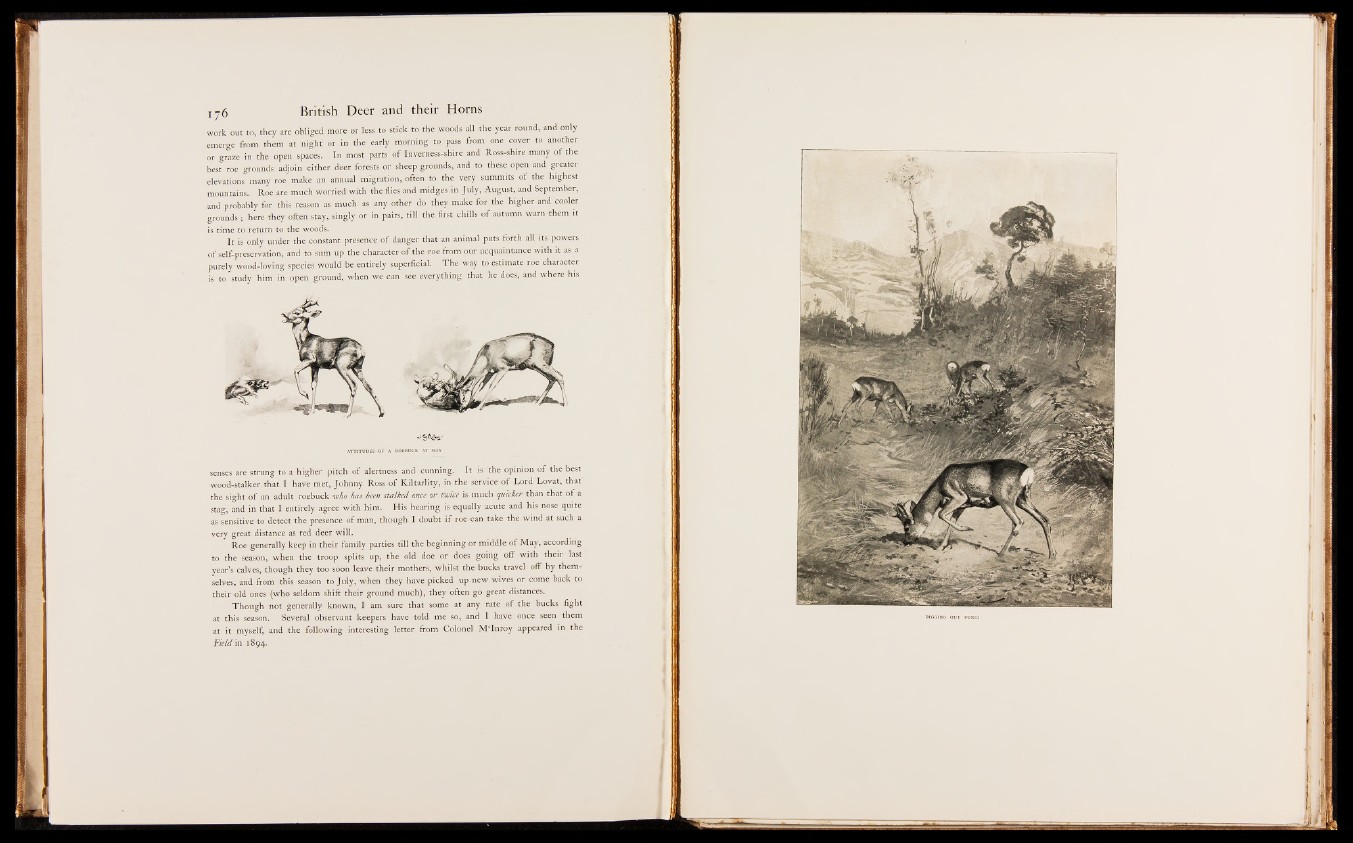
work out to, they are obliged more or less to stick to: the woods all the year round, and only
emerge from them t t;jiigh e i|r Jn the early morning to pass ||pm one leOver to another
or graze in the open spaces. In most parts o f Inverness-shire and R o s s e r e many o f the
best roe grounds adjoin either deer forests or sheep grounds, and to these open and greater
elevation's: many -roe .make an, aftjiual migration, often to the very summits (« th e B h e t t
mountainsHRoe are much worried with the flies and midges in July, August, and September,
and probablyfipr this reascffias much as any Other do they make for the highefjund cooler
grounds ; i here they often stay,,singly*! in pairs, till the first chills o f autumn warn them it
is time to return to the woods.
It is only under the constant presence o f danger that an animal puts forth all its powers
o f self-preservation, and to sum up the character o f the roe from our acquaintance with it as a
purely wood-loving species would be entirely superficial. T h e way to estimate roe character
is to study him in open ground, when we can see everything that he doés, and where his
senses are strung to a higher pitch o f alertness and cunning. It is the opinion o f the best
wood-stalker that I have met, Johnny Ross o f Kiltarlity, in the service o f Lord Lovat, that
the sight o f an adult roebuck who has been stalked once or twice is much quicker than that .of a
stag, and in that I entirely agree with him. His hearing is equally acute and his nose quite
as sensitive to detect the presence o f man, though I doubt i f roe can take the wind at such a
very great distance as red deer will.
Roe generally keep in their family parties till the beginning or middle o f May, according
to the season, when the troop splits up, the old doe or does going off with their last
year’s calves, though they too soon leave their mothers, whilst the bucks travel off by themselves,
and from this season to July, when they have picked up new wives or come back to
their old ones (who seldom shift their ground much), they often go great distances.
Though not generally known, I am sure that some at any rate o f the bucks fight
at this season. Several observant keepers have told me so, and I have once seen them
at it myself, and the following interesting letter from Colonel M ‘Inroy appeared in the
Field in 1894.